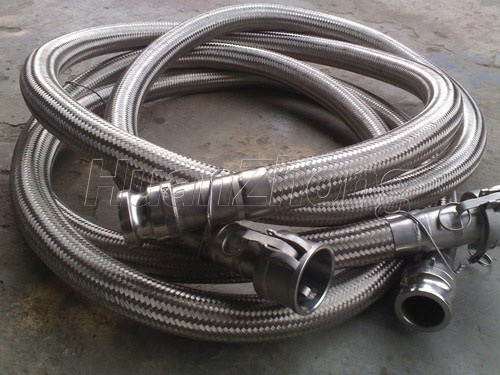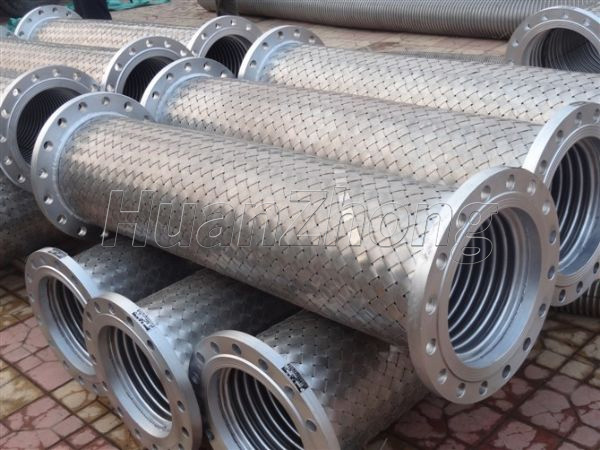Metal hose bending fatigue damage is the key to the bellows, it is necessary to make an analysis of
In various engineering applications, metal hose bending form is diverse, but boiled down (representative) is no more than the following four basic forms. No matter what kind of metal hose bending form, due to internal pressure and external bending torque, all working conditions of the metal hose will produce stress changes. Fittings, outer ring, neck, etc. are rigid components, they do not bear the metal hose bending deformation obligations, therefore, the impact of fatigue damage by bending is small.
Installed on the outer surface of the metal wire or metal belt sleeve, although the metal hose has assumed almost all of the axial force and also with the bellows bending deformation, but because it is a flexible component, its organization is woven loose state, movement, each (strip) of metal wire or metal belt between the conditions that allow bias, so when the axial force generated by the stress is much less than its material yield, metal wire or Metal belt mesh sleeve by the impact of bending fatigue damage is also small (extrusion, wear, bump and other non-fatigue mechanical damage is not included).
The core component of metal hose bellows is a flexible part, in addition to the direct role, but also subject to bending fatigue, often in the thin-walled or thinner bellows work, when its internal stress alternating times to a certain value, may produce fatigue cracks, therefore, the key to bending fatigue damage of metal hose is the bellows.
The instability of the bellows is classified according to different locations. When the corrugation of the bellows deformation, the corrugation is no longer perpendicular to the horizontal axis of the bellows plane instability. There are many factors of plane imbalance, related to the corrugation size and distance of corrugated pipe, generally positive correlation. From the point of view of the force, plane instability is mainly due to the large diameter of the bellows, so that the bending stress of the metal hose at the corrugation exceeds its bearing pressure, resulting in yielding.
Another kind of imbalance is the bellows due to uneven force, resulting in the bellows in relative to the circumference of the lateral displacement, the bellows overall deformation belongs to a bending state, this is called columnar imbalance. If the length of the bellows is too long, and the diameter of the bellows is too small, this case is easy to occur columnar imbalance. The column imbalance can be avoided by increasing the strength of the bellows and increasing the diameter.
As a kind of industrial piping system with multiple groups of transverse corrugations, the surface of the thin-walled axisymmetric elastic shell of the pipeline with a cylindrical shape, often used in the pipeline system displacement and thermal compensation, vibration isolation and noise reduction and media isolation. It is due to the complex variable cross-sectional geometry of corrugated pipe, under the action of fluid, making this thin-walled pipe is more likely to produce vibration deformation different from other pipes. The design of corrugated pipe, generally only consider its static load and static characteristics, resulting in the use of corrugated pipe, often caused by vibration-induced failure damage and other major economic losses.
In summary, based on the differences between the bellows and other pipes, the bellows modal analysis and transient response characteristics, in the study of metal hose bending has important practical significance.

